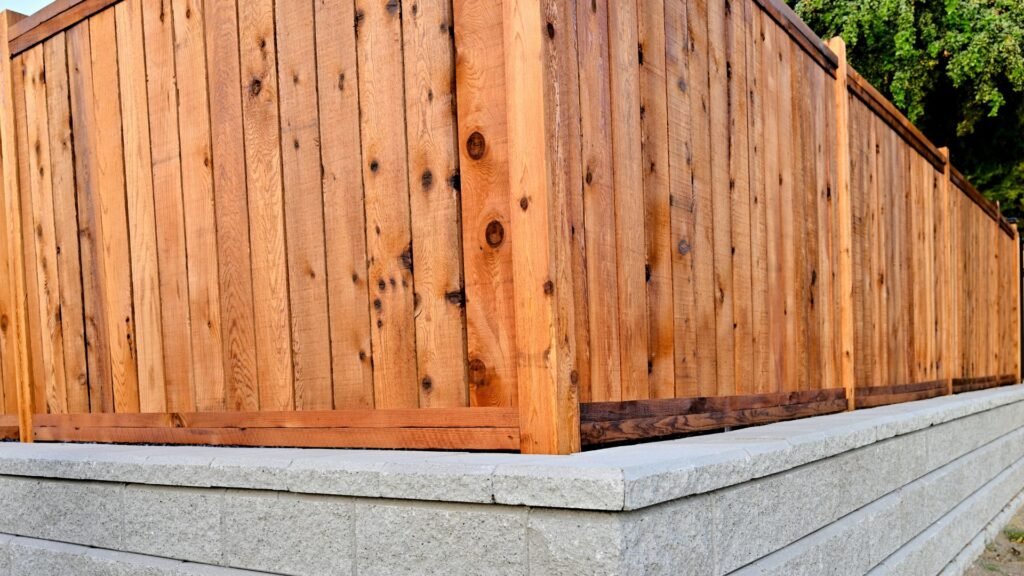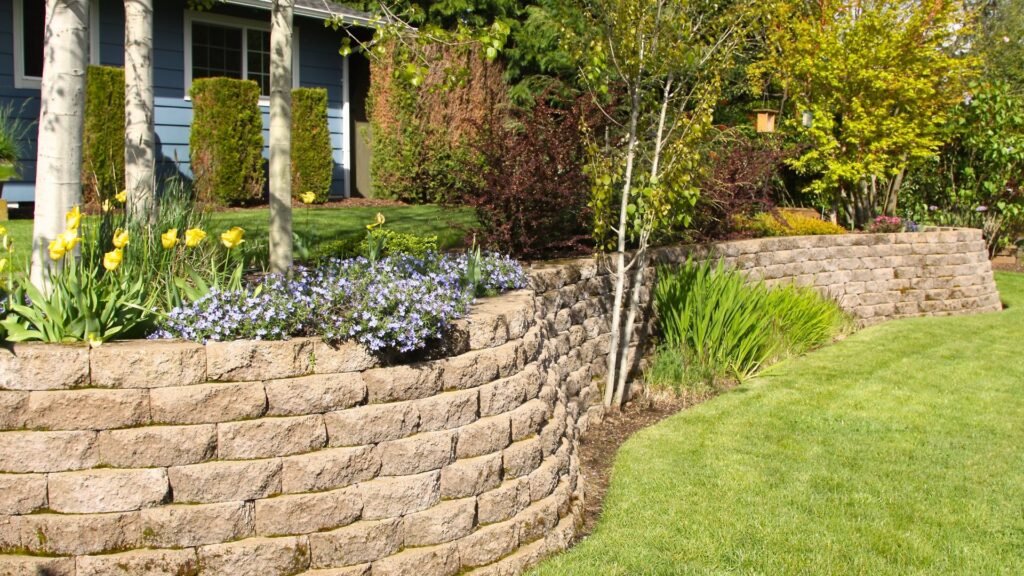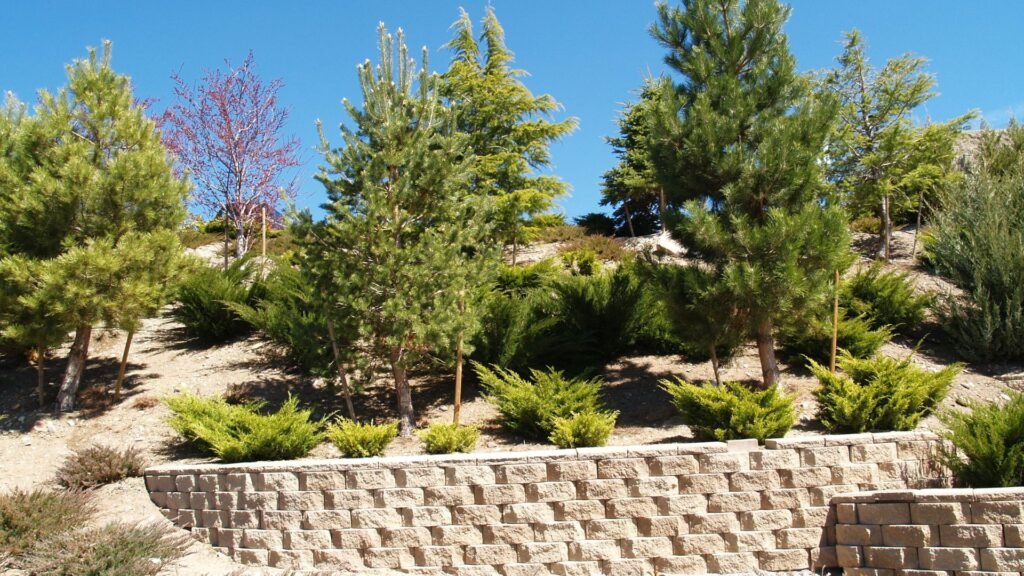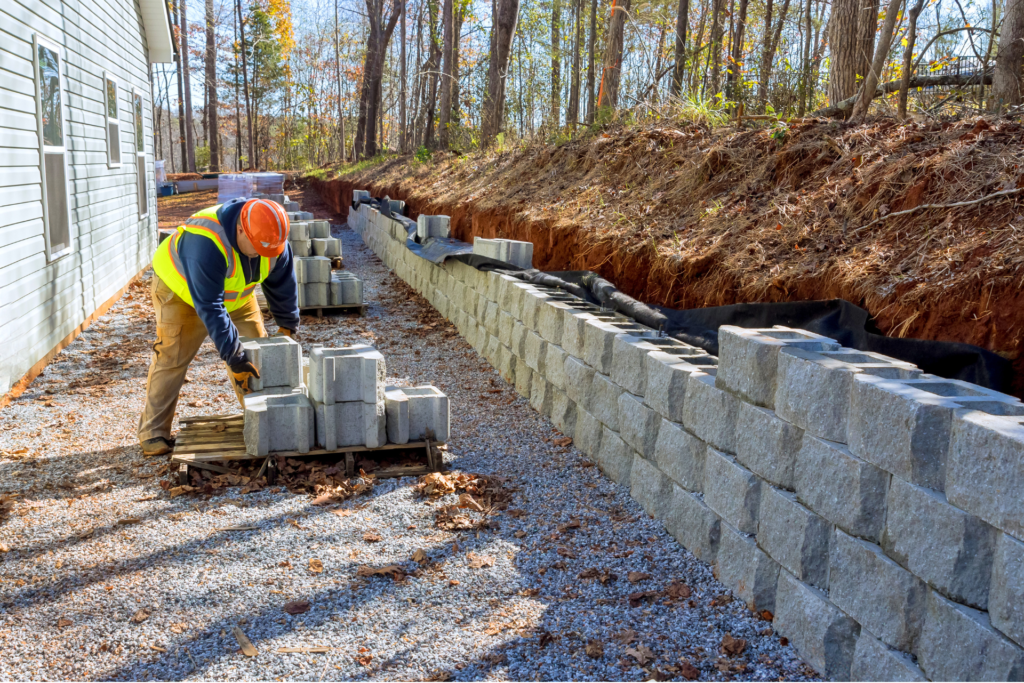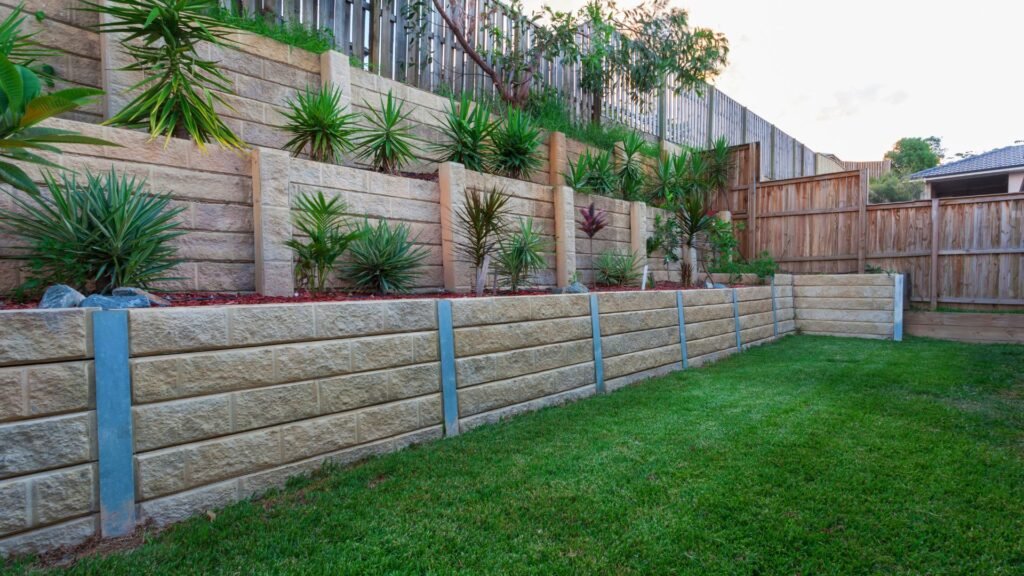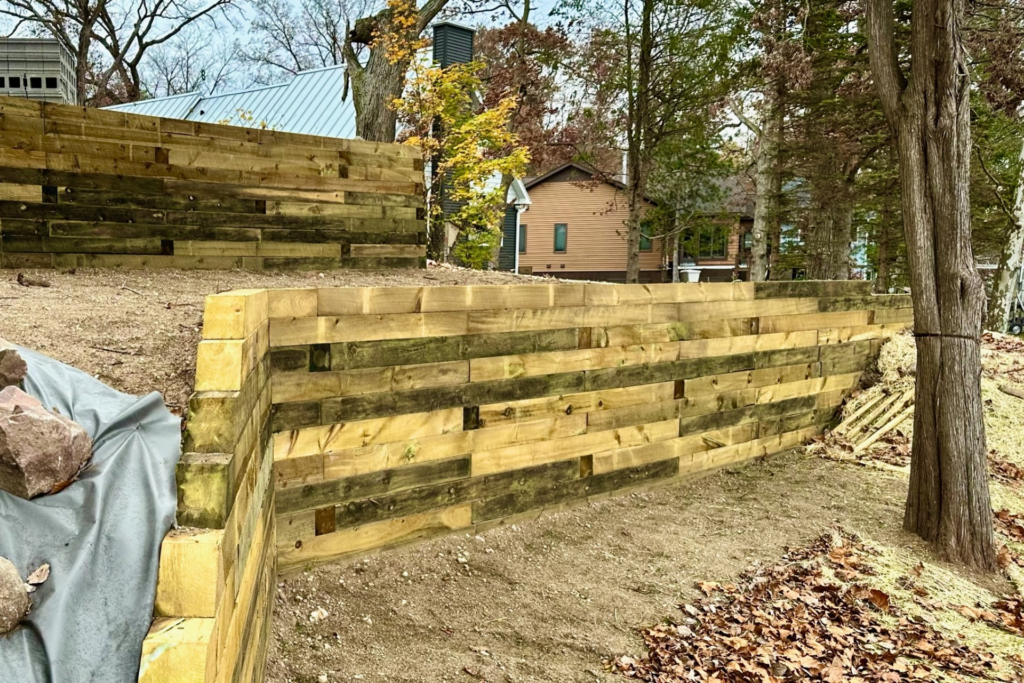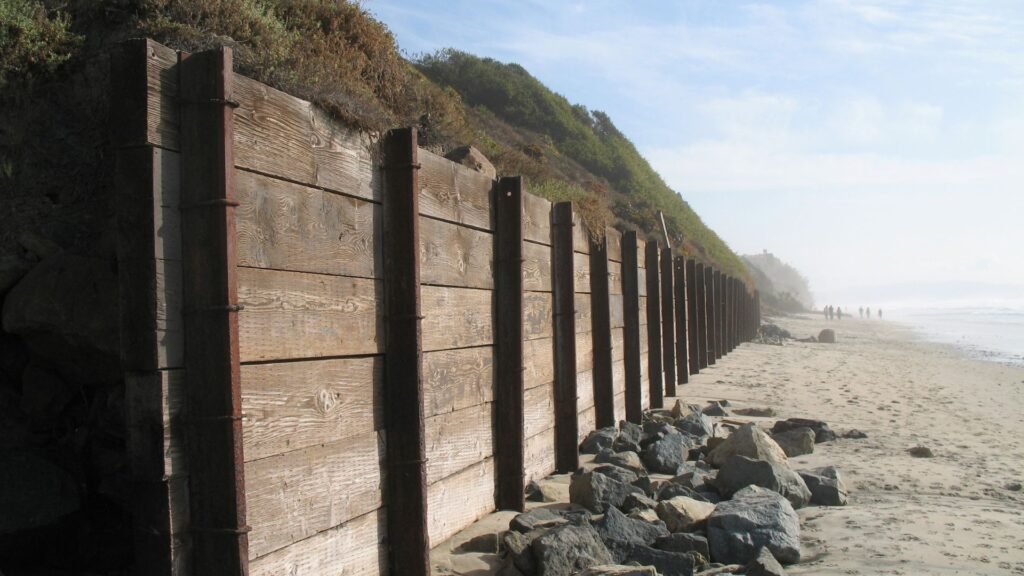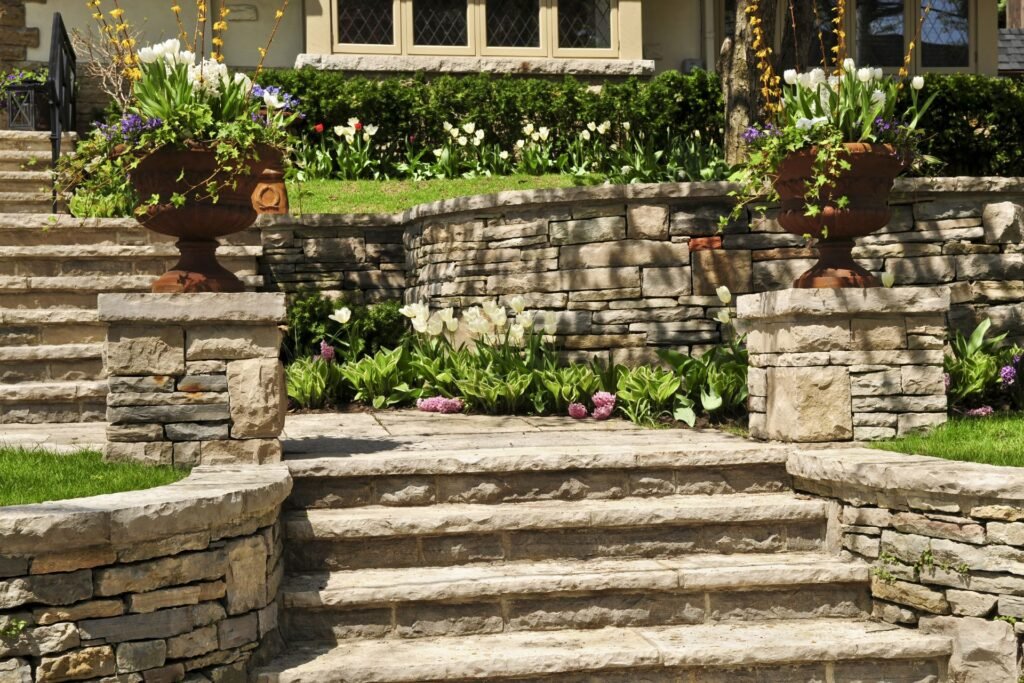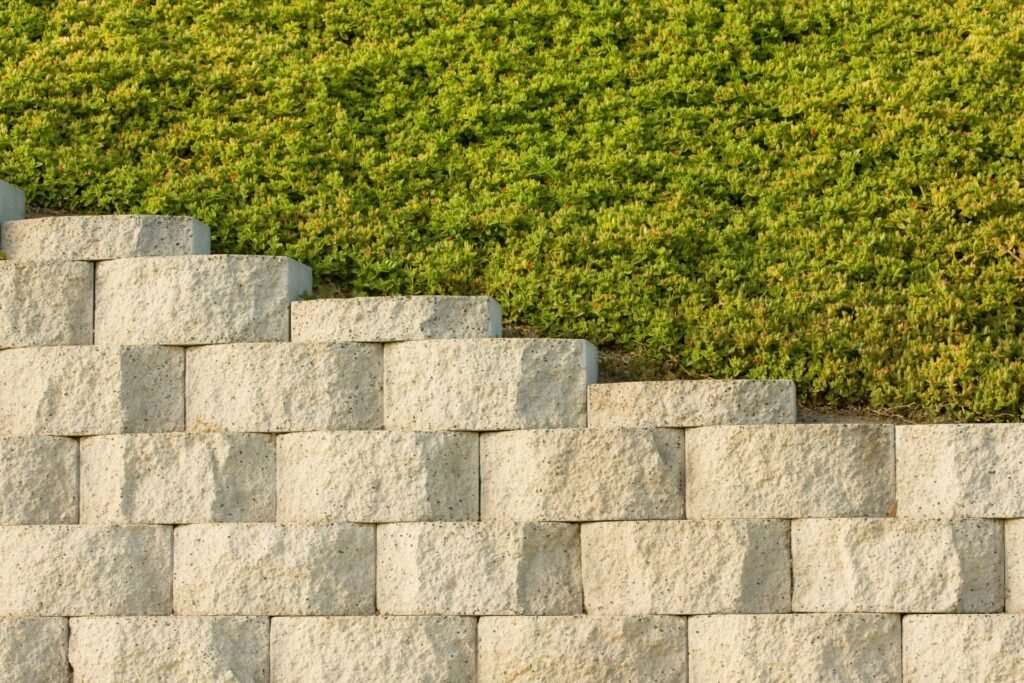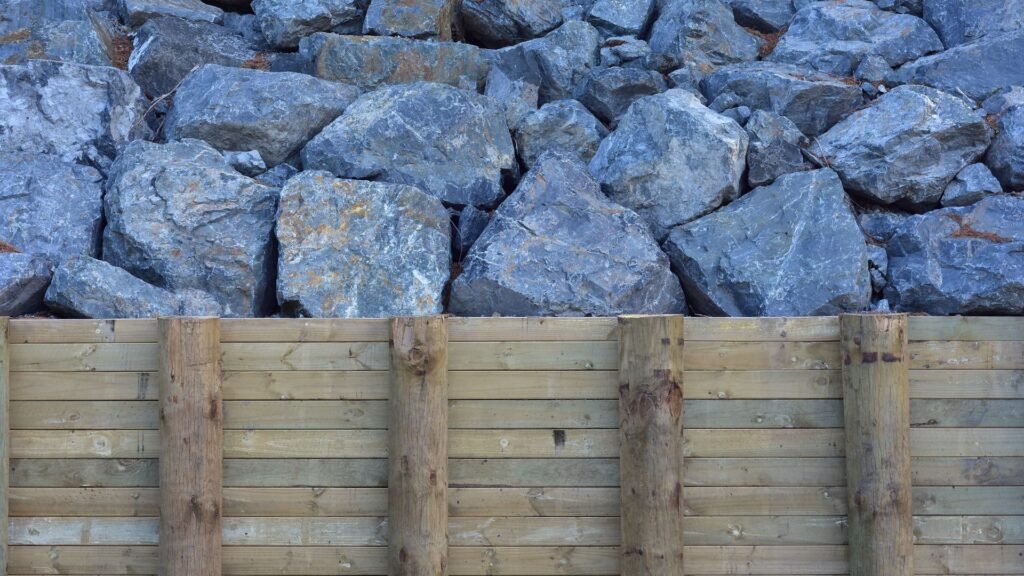Welcome to our comprehensive guide on building durable retaining walls in Rotorua, where the unique landscape and geology present both challenges and opportunities for homeowners and builders alike. Whether you’re looking to manage erosion, create terraced gardens, or enhance your outdoor spaces, constructing a long-lasting retaining wall is essential in this region, known for its volcanic soil, geothermal activity, and heavy rainfall. In this guide, we’ll walk you through everything from understanding Rotorua’s soil conditions to choosing the right materials and construction techniques, ensuring your retaining wall stands strong for years to come. Let’s dive into the key steps to make your next retaining wall project a lasting success.
A durable retaining wall in Rotorua requires careful planning to account for the region’s unique volcanic soil, frequent rainfall, and geothermal activity. Key steps include assessing the soil, selecting the right materials like concrete or natural stone, incorporating proper drainage systems to prevent water buildup, and ensuring a solid foundation. For taller or complex walls, hiring a local professional familiar with Rotorua’s landscape is recommended. With proper design and maintenance, your retaining wall will withstand the elements and provide long-term stability.
Table of Contents
Understanding Rotorua’s Landscape and Soil Types
Rotorua, located in the Bay of Plenty region of New Zealand, boasts a unique and fascinating geological environment. Known for its geothermal activity and volcanic origins, the region’s soil and terrain create distinct challenges and considerations for construction projects, especially when it comes to building retaining walls. In this section, we will explore the geology of Rotorua, the different soil types found in the area, and why understanding water management is crucial for successful retaining wall designs.
Rotorua’s Geology
Rotorua sits in a geologically active region, with its foundation formed by volcanic activity over thousands of years. This volcanic history is central to the area’s landscape, contributing to the unique soil composition and natural geothermal activity that defines the region. The soil in Rotorua is largely volcanic in nature, which means it is relatively lightweight and porous. While these characteristics may seem beneficial, they can create challenges for construction, especially when it comes to ensuring stability.
The volcanic soil, combined with the region’s frequent rainfall, poses risks for the long-term stability of retaining walls. Heavy rains can saturate the porous soil quickly, weakening the ground and increasing the likelihood of soil movement or erosion. In addition, geothermal activity can sometimes cause temperature fluctuations within the soil, affecting its structural integrity. These factors make it essential to carefully evaluate the geology of any construction site before proceeding with a retaining wall design in Rotorua.
Soil Considerations
A deep understanding of Rotorua’s soil types is a key factor when designing and constructing retaining walls. Different soil types will respond differently to weight, water, and weather conditions, so choosing the right materials and design is crucial for long-term durability.
The predominant soil types in Rotorua include volcanic soil and loam. Volcanic soil, as mentioned earlier, is lightweight and porous, making it prone to erosion and movement, especially when wet. Loam, on the other hand, is a mixture of sand, silt, and clay, which tends to be more stable but can vary in its composition across different locations.
When planning a retaining wall, it is important to conduct a thorough soil analysis. This analysis will help determine the type of reinforcement needed for the wall, the appropriate foundation depth, and whether additional stabilization measures are necessary. For example, areas with predominantly volcanic soil may require deeper foundations or additional drainage systems to prevent soil movement, while loamy areas might need less extensive reinforcement but more attention to drainage.
By carefully considering the soil type, you can prevent issues like slippage, bulging, or even wall collapse, ensuring that your retaining wall remains secure and functional for many years to come.
Water Management
Water management is a critical concern in Rotorua due to the region’s high water table and frequent rainfall. Without proper drainage, water can accumulate behind retaining walls, exerting hydrostatic pressure that weakens the structure over time. This is particularly problematic in areas where the soil is highly porous, as water can quickly saturate the ground, leading to instability and erosion.
Effective water management involves installing appropriate drainage systems to divert water away from the retaining wall. This might include gravel backfills, drainage pipes, or weep holes that allow water to escape and reduce pressure on the wall. In areas with high water tables, additional precautions may be necessary, such as waterproofing the retaining wall or installing more advanced drainage solutions.
Failing to address drainage can lead to costly repairs and even structural failure, so it’s important to prioritize water management when designing and building a retaining wall in Rotorua. By understanding the unique challenges presented by Rotorua’s water conditions, you can ensure that your retaining wall is not only functional but also resilient to the natural forces at play in this dynamic environment.
Building retaining walls in Rotorua presents unique challenges due to its volcanic soil, geothermal activity, and frequent rainfall. Understanding the geological factors, soil types, and water management needs is essential to create retaining walls that can withstand the area’s natural conditions. With careful planning and design, you can ensure the longevity and stability of your retaining wall, providing a reliable solution for managing the landscape’s complexities.
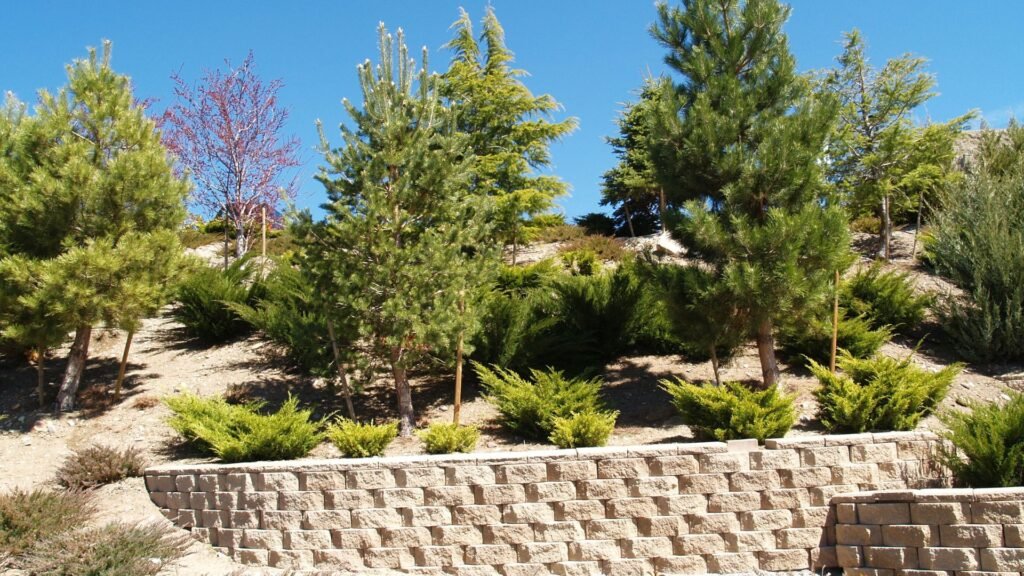
Types Of Retaining Walls Suitable For Rotorua
When selecting the right type of retaining wall for a project in Rotorua, it’s important to understand how different options interact with the region’s unique soil conditions and landscape features. Rotorua’s volcanic soils and the diverse topography require careful planning to ensure long-term stability. Below are the most suitable types of retaining walls for Rotorua and the specific circumstances where each type shines.
Gravity Retaining Walls
Gravity walls rely solely on their own weight to hold back soil. These walls are typically made from heavy materials such as concrete, stone, or bricks, which makes them effective for managing pressure from the soil they retain. In Rotorua, where smaller residential projects are common, gravity walls are a go-to choice. The volcanic soil in the region, which tends to be more stable when undisturbed, makes gravity walls a practical option for low-height retaining needs. Since gravity walls are straightforward in design and construction, they are often used in garden landscaping or small-scale erosion control projects. However, because they depend on mass rather than deep foundations, they are generally more suitable for projects with minimal height requirements or where the soil is already fairly compact.
Cantilevered Retaining Walls
For taller retaining walls or where the landscape is more challenging, such as Rotorua’s steep slopes, cantilevered retaining walls provide a more robust solution. Cantilevered walls consist of a thin stem of reinforced concrete attached to a base slab, which extends into the soil beneath. This unique structure distributes the load more efficiently, allowing these walls to support greater heights and more complex soil conditions. In areas around Rotorua where slopes are a common feature, cantilevered walls excel due to their ability to handle greater lateral earth pressure while using less material than a gravity wall. These walls are often used in commercial projects or larger residential developments where taller walls are needed to create terraces or manage elevation changes. Their cost-effectiveness and strength make them a solid choice for more demanding projects.
Anchored Retaining Walls
Rotorua is known for its loose or unstable soil in some areas, particularly where geothermal activity or past volcanic events have affected the ground structure. For these conditions, anchored retaining walls are ideal. Anchored walls use cables or other forms of reinforcement that are anchored deep into the ground behind the wall, providing additional support in areas where the soil might not be able to support the weight of a gravity or cantilever wall alone. These anchors, often combined with materials like reinforced concrete or steel plates, make anchored walls a powerful choice for areas with high soil pressure or where extra stability is needed. This makes them highly effective in certain parts of Rotorua where soils can be unpredictable, offering a secure solution for both residential and commercial applications.
Segmental Retaining Walls
For homeowners looking for an affordable and flexible retaining solution, segmental retaining walls offer a versatile and DIY-friendly option. These modular walls are made from interlocking concrete blocks that can be easily assembled without the need for mortar. This makes them a popular choice for small to medium-sized projects in Rotorua, especially for creating garden beds, terraces, or decorative landscaping features. The interlocking design provides stability while allowing for some flexibility in the wall’s structure, making them ideal for managing slight changes in ground pressure. Segmental retaining walls are highly durable and can be adjusted to suit different soil conditions, which is particularly useful in Rotorua, where soil types can vary significantly across short distances. Their ease of installation and affordability make them accessible to homeowners who want a reliable yet visually appealing solution for their landscaping needs.
By understanding the strengths and applications of each type of retaining wall, homeowners and developers in Rotorua can make informed decisions that ensure the long-term success and safety of their projects. Whether it’s a simple garden wall or a complex structure on a steep slope, there’s a retaining wall design that will work for Rotorua’s unique conditions.
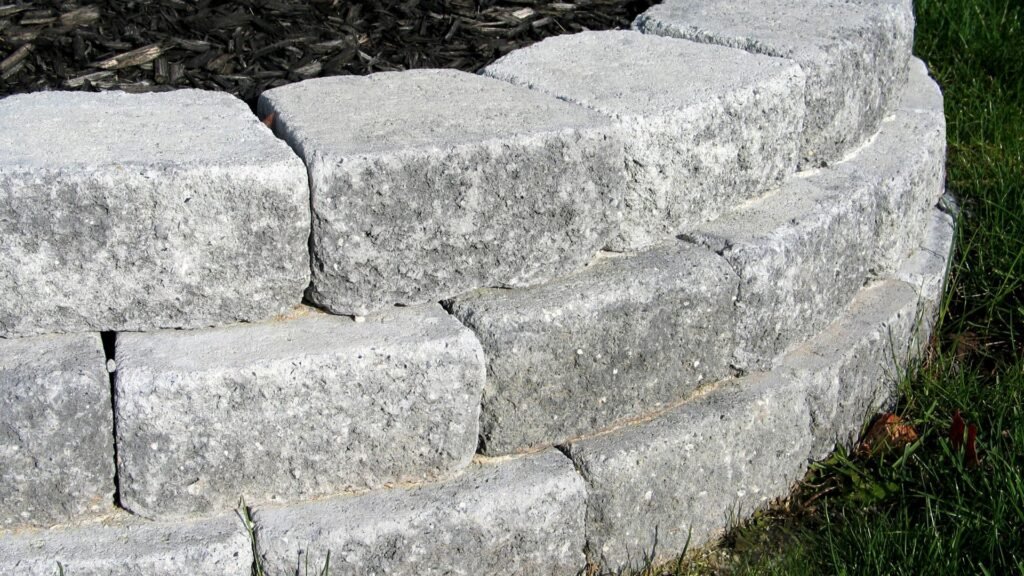
Selecting The Best Materials For Durability
Choosing the right materials for retaining walls is crucial for ensuring long-term durability and functionality, especially in areas like Rotorua, where environmental conditions can be challenging. In this section, we’ll explore several popular options, detailing why they are effective and how to maintain them for maximum lifespan.
Concrete Blocks: Strength and Moisture Resistance
Concrete blocks are among the most widely used materials for retaining walls, and for good reason. In Rotorua, where moisture levels can fluctuate, concrete is an excellent choice due to its high strength and resistance to moisture. Concrete blocks offer structural integrity that can withstand the pressures exerted by soil and water, making them ideal for areas with varying weather conditions. Additionally, they’re relatively low-maintenance, requiring minimal upkeep over time compared to other materials.
The dense nature of concrete makes it naturally resistant to water penetration, which is vital in Rotorua’s damp environment. This characteristic helps prevent erosion and degradation over time, ensuring the wall remains sturdy for many years. Whether you’re looking to support garden beds or protect your property from soil erosion, concrete blocks offer a reliable, long-lasting solution.
Natural Stone: Aesthetic Appeal Meets Durability
For homeowners seeking both beauty and functionality, natural stone is an excellent option. Natural stone walls not only offer a timeless, elegant appearance but are also capable of withstanding the elements in Rotorua. With its organic texture and variation, natural stone can blend seamlessly into the surrounding landscape, adding visual interest to outdoor spaces.
However, it’s important to note that natural stone can be a more expensive option due to the material’s sourcing and installation process. The upfront investment may be higher, but the long-term durability of natural stone can outweigh the costs, especially when considering its resistance to weathering and moisture. When properly installed, stone walls can last for decades with minimal maintenance, making them a sound investment for those prioritizing both aesthetics and functionality.
Timber Walls: Natural Charm with Proper Protection
Timber retaining walls are popular for those looking to achieve a more rustic, natural look. Timber provides a warm, inviting feel to any outdoor space and can be a cost-effective material compared to stone or concrete. However, due to Rotorua’s damp climate, extra precautions are necessary to protect timber walls from rot and decay.
To ensure the longevity of timber walls, it’s essential to use treated wood designed to withstand moisture. Applying sealants and water-resistant coatings can also provide an additional layer of protection, preventing water from penetrating the wood fibers. Regular inspections and maintenance, such as reapplying protective coatings and checking for signs of rot, can keep timber walls looking great and structurally sound for many years.
Geogrid and Reinforcements: Enhancing Wall Stability
For retaining walls built on sloped or unstable soil, additional reinforcements like geogrid are highly recommended. Geogrid is a synthetic material placed between layers of soil, providing extra support to the retaining wall by distributing pressure and stabilizing the ground. In Rotorua, where volcanic soils can sometimes be less stable, incorporating geogrid into your retaining wall design can significantly increase its longevity and performance.
By improving the wall’s ability to resist the forces of soil movement and moisture, geogrid ensures that the structure remains firm over time. Additionally, using other reinforcement materials, such as steel rods or mesh, can further strengthen the wall’s foundation, making it more resistant to cracking or shifting.
In conclusion, selecting the best materials for your retaining wall in Rotorua involves considering both the aesthetic appeal and the environmental demands of the area. Concrete blocks offer strength and moisture resistance, natural stone provides beauty and durability, timber brings warmth and charm with proper care, and reinforcements like geogrid ensure stability in challenging soils. By carefully choosing the right materials and applying the appropriate maintenance strategies, your retaining wall can stand the test of time.
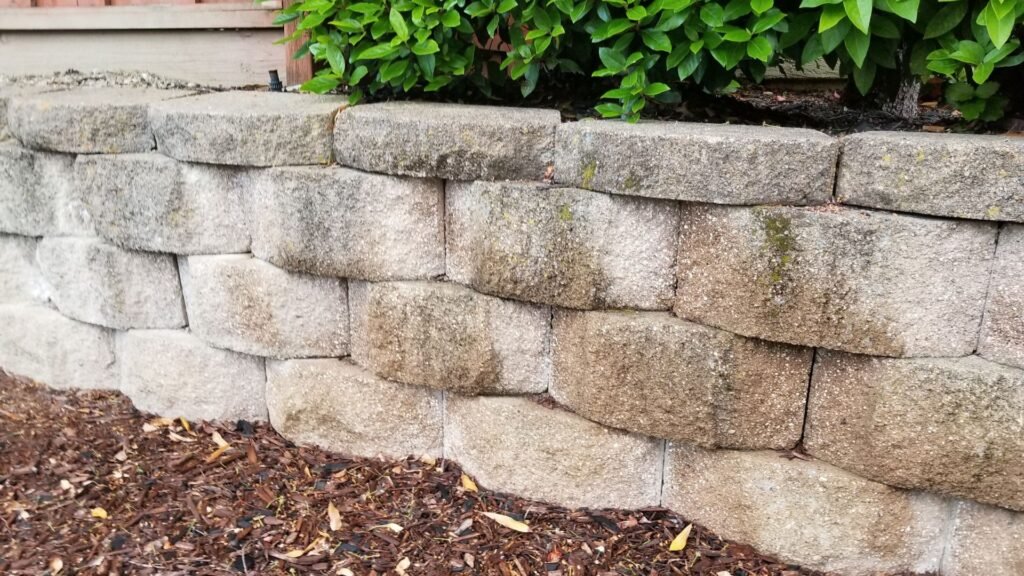
Step-By-Step Guide To Building A Durable Retaining Wall In Rotorua
Building a retaining wall that can withstand the unique environmental conditions in Rotorua requires thoughtful planning and careful execution. Whether you’re preventing erosion, managing a slope, or simply adding aesthetic value to your outdoor space, following these steps will ensure you build a wall that lasts.
Step 1: Site Assessment and Planning
Before breaking ground, it’s essential to assess the landscape. In Rotorua, the topography can vary greatly, from flat lands to steep slopes, which directly impacts your retaining wall’s design. Begin by evaluating the slope of your property, the soil type, and any natural water flow patterns.
Rotorua’s volcanic soils can be tricky, as they range from compacted pumice to loose, sandy soils. Understanding the type of soil you’re working with is crucial because it affects the wall’s stability. Additionally, it’s important to consult with local authorities to determine if building permits are required for your project. Depending on the height and location of your retaining wall, specific regulations may need to be followed. Addressing these considerations early will save you from costly adjustments down the road.
Step 2: Designing the Retaining Wall
Once you’ve assessed the site, it’s time to design your retaining wall. The first step in the design phase is determining the appropriate height for your wall, as taller walls require more robust support. In general, walls over 1.2 meters often require engineering input.
Material selection is another critical factor. In Rotorua, popular options include concrete blocks, natural stone, and timber, each offering different aesthetic and functional advantages. Consider the surrounding environment, your budget, and how the wall will fit into the overall landscape design. For example, a stone wall might blend seamlessly with a natural landscape, while a concrete block wall offers more modern appeal and structural strength. The soil conditions and slope will also influence your choice of materials—some soils require sturdier wall structures than others.
Step 3: Excavation and Preparation
With your design in hand, excavation and site preparation come next. Start by marking out the location of the wall, ensuring that it follows the natural slope of the land. Use stakes and string to outline the wall’s footprint. Digging the foundation is one of the most critical steps in building a retaining wall. In Rotorua’s wet climate, drainage is key, so make sure to excavate a trench that allows for proper water runoff.
The depth of your trench depends on the height of the wall. For shorter walls, you might only need a trench of around 15-20 cm deep. However, taller walls require deeper foundations for added stability. To ensure your wall stands the test of time, always dig below the frost line and level the base.
Step 4: Installing Drainage
Rotorua’s high rainfall can pose a significant risk to retaining walls if proper drainage isn’t installed. Water buildup behind the wall increases pressure, leading to cracks or even collapse over time. To avoid this, installing drainage solutions is essential.
One effective method is to place a perforated drainage pipe at the base of the wall, with the pipe sloping slightly to direct water away from the structure. Additionally, you can use drainage gravel behind the wall to help water filter through more easily. Incorporating drainage solutions from the start will prevent water-related issues down the line.
Step 5: Laying the Foundation
A strong retaining wall starts with a solid foundation. Once the trench is dug and the drainage is in place, it’s time to lay the foundation. For most walls, a compacted gravel base works well, providing a sturdy, flexible base that can adjust to slight ground shifts.
If you’re working with heavier materials like concrete blocks or natural stone, you may want to pour a concrete footing for added strength. Whichever method you choose, ensure that the foundation is level. Use a leveler frequently during this process to avoid structural weaknesses as you build the wall.
Step 6: Building the Wall
Now that the foundation is set, it’s time to start building the wall itself. Begin laying the first row of blocks or stones, ensuring each piece is level and fits tightly with the next. This first layer is critical—it serves as the base for the rest of the wall, so take your time to get it right.
As you stack additional rows, stagger the seams for added stability. If you’re using concrete blocks, fill the hollow cores with gravel or rebar for extra reinforcement, especially on taller walls. For stone walls, pay careful attention to the alignment of each stone to maintain the wall’s structural integrity. Always check that each layer is level before moving to the next.
Step 7: Backfilling
Backfilling is another critical component of your retaining wall’s longevity. As you build the wall, you should backfill with gravel or another free-draining material to reduce pressure on the wall. Avoid using soil alone, as it tends to retain water, which can weaken the structure over time.
Make sure to backfill in layers, compacting each one to eliminate air pockets that could cause shifting later. Proper backfilling ensures that your wall remains stable and resists erosion, especially in Rotorua’s rainy conditions.
Step 8: Final Inspection and Maintenance
Once the wall is complete, perform a thorough inspection. Check for any signs of misalignment, gaps between materials, or drainage issues. Ensure the wall is straight and secure, and make any necessary adjustments.
Ongoing maintenance will help extend the life of your retaining wall. Periodically inspect it for cracks, shifts, or water pooling. Address minor issues promptly to prevent more significant problems down the line. By keeping an eye on the condition of the wall, you can ensure it remains a durable and attractive feature of your property for years to come.
Building a retaining wall in Rotorua requires careful consideration of the unique local environment, including soil types and rainfall patterns. By following these step-by-step instructions—from site assessment and design to drainage and maintenance—you’ll be well on your way to constructing a retaining wall that not only serves its purpose but also enhances the beauty and functionality of your landscape.
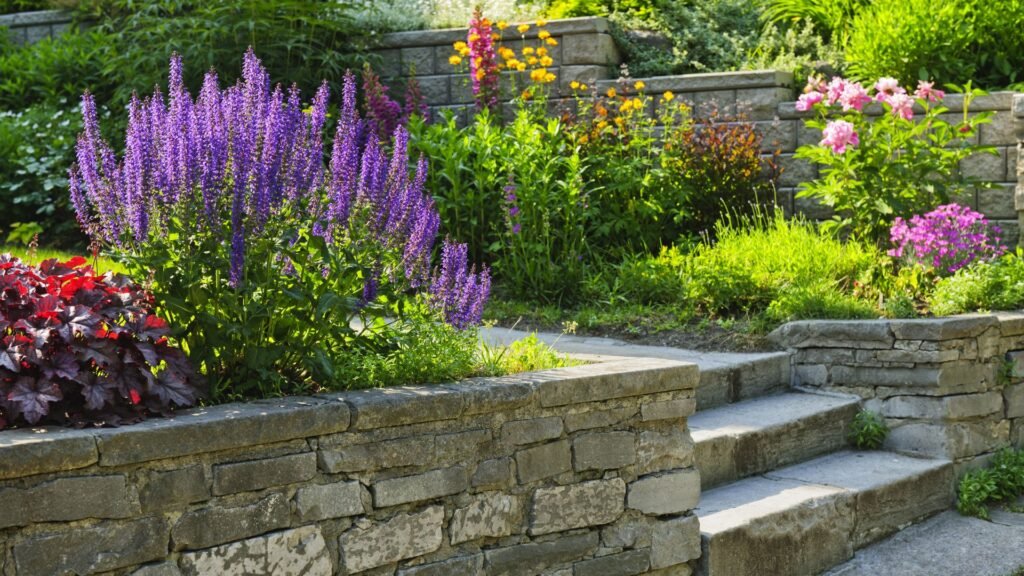
The Importance Of Drainage In Rotorua
Proper drainage is critical in Rotorua due to the region’s unique climate and terrain. Retaining walls, which are common in both residential and commercial properties, can be significantly impacted by rainfall and moisture buildup if not designed with an effective drainage system. Without the right drainage, the structural integrity of retaining walls is at risk, which can lead to costly repairs and even dangerous failures. Below, we’ll explore why drainage matters in Rotorua, practical solutions for retaining wall drainage, and the severe consequences of neglecting this essential aspect of wall design.
Rotorua’s Rainfall and Its Impact on Retaining Walls
Rotorua experiences a significant amount of rainfall throughout the year, which can put immense pressure on retaining walls. Heavy rain can saturate the soil behind a retaining wall, increasing the load on the structure. When water accumulates without proper drainage, it can lead to hydrostatic pressure – a force created by the buildup of water. This pressure can cause the wall to bulge, crack, or even collapse over time.
Without adequate drainage, walls made of materials such as wood, stone, or concrete may deteriorate faster, as the constant exposure to moisture weakens their structure. This is why it’s crucial to integrate effective drainage solutions into retaining wall construction, especially in areas prone to heavy rain like Rotorua.
Common Drainage Solutions for Retaining Walls
To prevent issues caused by excessive moisture, a variety of drainage methods can be employed. Below are some of the most effective solutions:
- Weep Holes: These small openings are strategically placed at the base of a retaining wall to allow water to escape. Weep holes reduce the buildup of water pressure, ensuring that moisture doesn’t accumulate behind the wall.
- French Drains: A French drain is a trench filled with gravel or rock, containing a perforated pipe that redirects water away from the retaining wall. It’s an excellent way to prevent water from pooling and saturating the soil, which can lead to structural problems.
- Retaining Wall Drainage Fabrics: Geotextile fabrics can be installed behind the retaining wall to separate the soil from drainage gravel. These fabrics help prevent soil erosion while allowing water to filter through and drain away, minimizing the risk of water-related damage.
Each of these solutions offers a practical way to manage moisture and ensure that retaining walls remain strong and stable, even in Rotorua’s wet conditions.
The Consequences of Poor Drainage
Failing to incorporate proper drainage into a retaining wall design can lead to a number of serious issues. The most common problems include:
- Wall Failure: When water pressure builds up behind a wall, it can cause the structure to fail, leading to expensive repairs or complete replacement. In extreme cases, wall collapse can also pose safety risks, especially on properties with steep slopes.
- Soil Erosion: Without adequate drainage, water can erode the soil behind and around a retaining wall. Over time, this can weaken the foundation of the wall, making it more prone to shifting and instability.
- Water Pooling: Poor drainage can lead to standing water near the base of a retaining wall. This not only affects the wall’s stability but also creates a breeding ground for mold and pests. Additionally, water pooling can damage nearby landscaping or flood lower-lying areas of a property.
Ensuring proper drainage is a vital step in retaining wall construction and maintenance, especially in regions like Rotorua, where heavy rainfall is common. By investing in appropriate drainage systems such as weep holes, French drains, or drainage fabrics, you can protect your property from structural damage and avoid costly issues in the future.
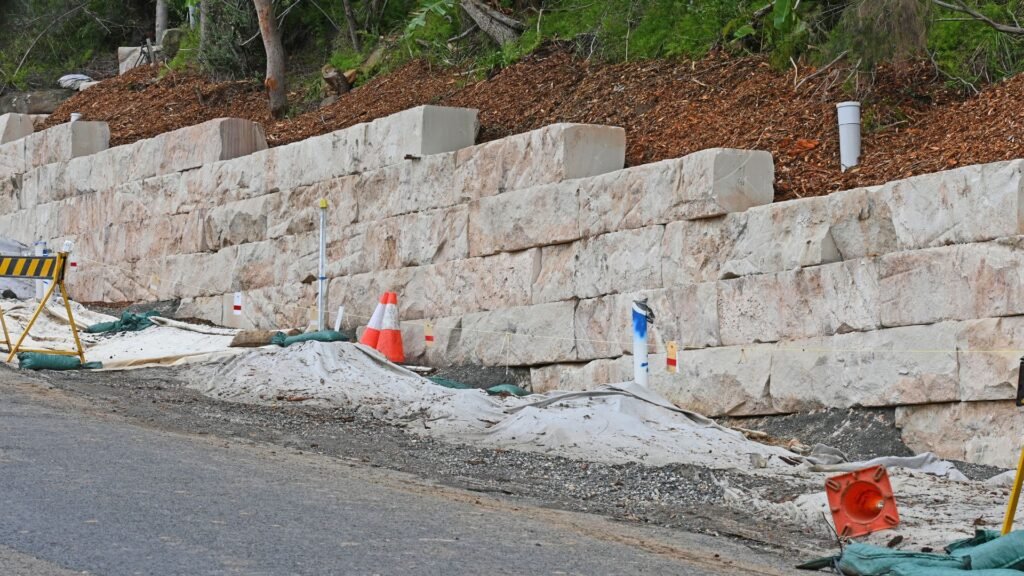
Hiring Professionals Vs. DIY: Which Is Right For You?
Deciding whether to tackle a retaining wall project yourself or hire a professional can be a tough call for any homeowner. It’s important to weigh your options carefully based on the scope of the project, your experience, and the specific challenges of the site. Here’s a breakdown to help you decide which approach is best for your retaining wall needs.
When to Consider a DIY Approach
For those who enjoy getting hands-on and have experience with home improvement projects, a DIY approach can be a rewarding way to save on labor costs. DIY is particularly suitable for smaller-scale retaining wall projects, such as garden edging or low garden walls. These types of walls, typically under 1 meter in height, require less technical expertise and fewer permits.
If you have the right tools and materials, and you’re confident in your ability to follow instructions carefully, a DIY retaining wall can be a manageable project. Online tutorials and how-to videos can guide you through the process, from digging the trench to laying the blocks. However, keep in mind that even for a small wall, you’ll need to properly account for drainage and soil stability to avoid future issues.
DIY projects also allow for full creative control. You get to decide on materials, design, and layout without the constraints that might come with a professional contractor’s schedule. This can be particularly appealing if you have a specific vision in mind for your garden or outdoor space.
Benefits of Hiring a Professional
For larger or more complex retaining wall projects, hiring a professional contractor is often the better choice. Rotorua’s unique soil and environmental conditions can present challenges that require expert knowledge to navigate. For instance, volcanic soils in the area are prone to erosion and instability, which makes the design and construction of retaining walls more difficult. Local contractors are familiar with these specific conditions and can ensure that your wall is built to withstand them.
Professional contractors bring a wealth of experience to the table. They are equipped with the latest tools and techniques to complete the job efficiently and to high standards. In addition, they can handle the necessary permits, zoning laws, and inspections that are often required for larger retaining walls.
Moreover, professionals often have access to higher-quality materials that aren’t always available to DIYers. When you hire a contractor, you are not only paying for their labor but also their expertise and their relationships with suppliers. This can result in a stronger, more durable wall that adds long-term value to your property. Plus, should any issues arise, many professionals offer warranties or guarantees for their work.
Cost Considerations
When weighing the cost of a DIY project versus hiring a professional, it’s crucial to look beyond just the initial outlay. For a DIY project, the main expenses will be materials, tools, and your time. Depending on the size of the wall and the materials used, a small DIY retaining wall can cost anywhere from a few hundred to a couple of thousand dollars.
However, what many homeowners fail to consider is the potential for mistakes. Miscalculating the load-bearing requirements or neglecting proper drainage can lead to costly repairs down the road. While a DIY approach may seem cheaper upfront, improper construction can cause the wall to collapse, leading to more significant expenses in the future.
On the other hand, hiring a professional contractor typically involves higher upfront costs, with prices ranging anywhere from several thousand to tens of thousands of dollars, depending on the size and complexity of the project. However, this investment pays off in the long run. You are paying for peace of mind, knowing the job is done correctly the first time. Moreover, a professionally built retaining wall will likely last longer and require less maintenance, saving you money over time.
In conclusion, while small-scale DIY projects can be fun and budget-friendly, larger or more complex retaining walls are best left to professionals who understand the intricacies of the local terrain and environmental conditions. Ultimately, the decision comes down to the size of your project, your confidence in your construction skills, and your willingness to invest in long-term quality.
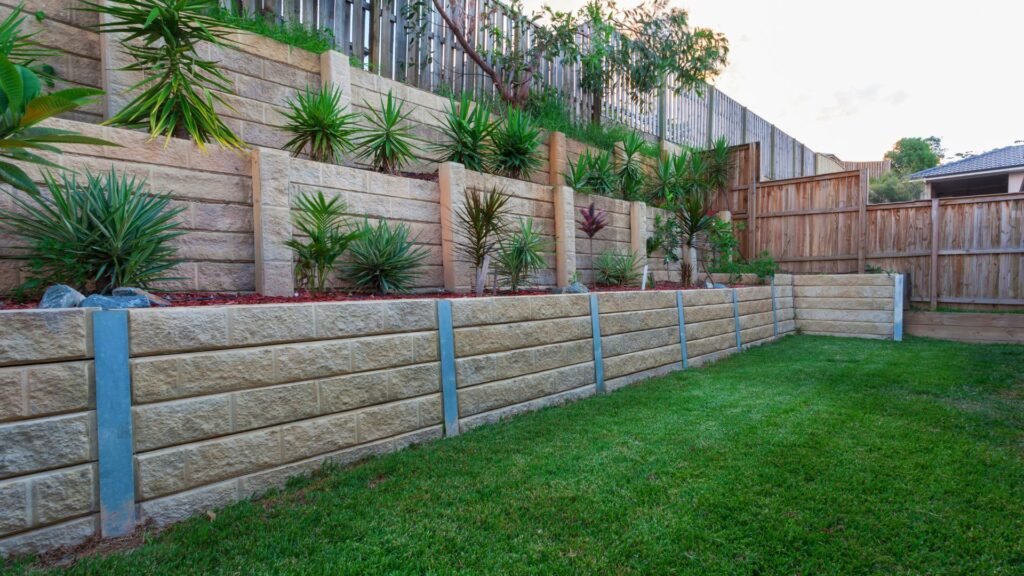
Local Building Codes And Permits In Rotorua
When planning any construction project in Rotorua, especially one involving retaining walls, it’s essential to be aware of local building codes and permit requirements. Not only will this ensure your project runs smoothly, but it will also help you avoid costly mistakes that could lead to fines or forced reconstruction. Let’s explore what you need to know about Rotorua’s specific regulations and how to stay compliant throughout your project.
Council Regulations
In Rotorua, the Rotorua Lakes Council governs all building regulations, including those related to retaining wall construction. Understanding when a building permit is required is critical. Generally, retaining walls that are over 1.5 meters in height, or if the wall supports a structure or load, will need council approval. Additionally, if the wall is being built near a boundary or will affect drainage, a resource consent might be necessary.
Even for retaining walls under 1.5 meters, you may still need to comply with certain construction standards. These regulations are in place to ensure the safety and stability of the structure, protecting both the property owner and the public. Always check with the council before starting your project, as failing to do so can result in non-compliance penalties or forced reconstruction.
Compliance Tips
Staying compliant with Rotorua’s local building codes doesn’t have to be overwhelming. Here are some practical tips to help ensure your retaining wall project adheres to council regulations:
1. Check Height Restrictions Early: If your wall is approaching or exceeding 1.5 meters, or will bear extra loads, you’ll need a permit. Make this determination early to avoid delays.
2. Engage a Licensed Contractor: A professional contractor familiar with local codes can help navigate the permitting process and ensure the wall is built to required standards. Licensed contractors also typically know when to involve geotechnical engineers, which can be crucial for retaining walls on sloped terrain or poor soil conditions.
3. Understand Setback and Drainage Rules: Walls built near property lines or affecting water flow may require additional permits or engineering input. Avoid encroaching on neighbor boundaries or altering drainage without proper approval.
4. Submit the Correct Documentation: When applying for permits, ensure that all required documents, such as structural designs, site plans, and geotechnical reports, are included. Missing documents can delay approval.
5. Plan for Inspections: Some retaining wall constructions require inspections at various stages. Ensure these are scheduled and completed to avoid any setbacks.
Consulting the Rotorua Lakes Council
To streamline your retaining wall project, it’s essential to consult with the Rotorua Lakes Council early in the process. The council website offers detailed resources on local building codes, as well as guidance on when and how to apply for the necessary permits. You can access building consent forms and guidelines directly from the Rotorua Lakes Council’s official website, or by visiting the council office in person.
For any specific inquiries, it’s recommended to speak with a council representative who can provide tailored advice based on your project’s scope. Whether you need clarification on height limits, setback requirements, or drainage regulations, council staff are well-equipped to guide you through the process.
To summarize, ensuring your retaining wall project complies with Rotorua’s local building codes is key to avoiding complications. Start by checking regulations, submit the necessary permits, and work with professionals who understand the local requirements. With the right approach, you can complete your project efficiently and in full compliance with Rotorua’s rules.
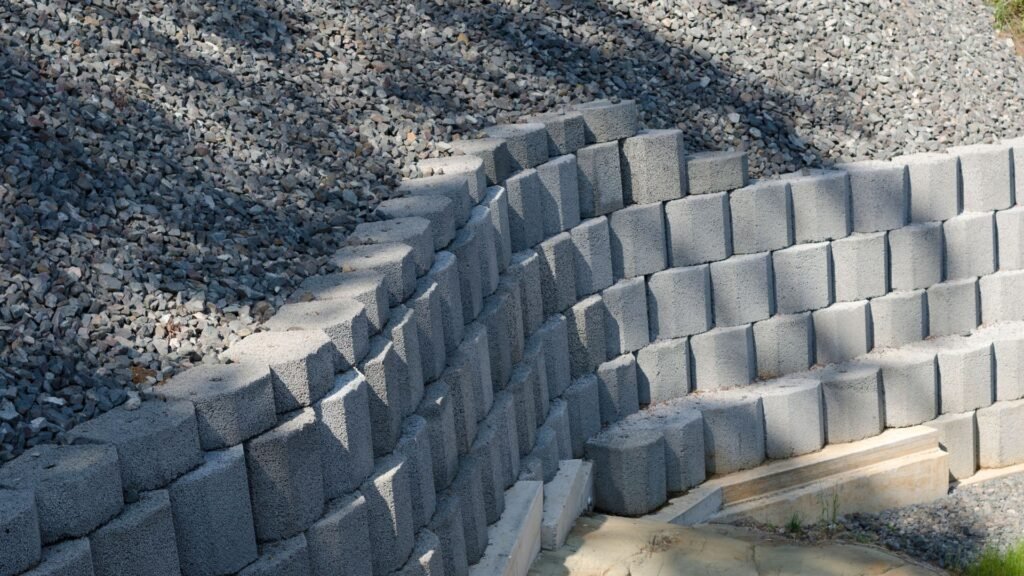
Maintenance Tips To Extend The Life Of Your Retaining Wall
Taking care of your retaining wall is essential if you want to ensure its longevity and effectiveness. By following a few simple maintenance steps, you can prevent costly repairs and keep your wall in top shape for years to come. Here’s a detailed look at some critical tips for maintaining your retaining wall.
1. Annual Inspections
Regular inspections are crucial for detecting early signs of damage. Make it a habit to examine your retaining wall at least once a year, or more frequently after heavy rains or extreme weather conditions. During these inspections, look out for cracks, bulges, or shifts in the wall. These are often indicators that the wall may be under pressure or beginning to fail. Also, check for any water pooling at the base or along the structure, as this could suggest poor drainage, which is one of the main culprits for wall damage. Catching issues early can save you from bigger problems down the road.
2. Vegetation and Landscaping
The plants and trees around your retaining wall can either support or damage its stability, depending on what you choose to grow. While low-maintenance ground cover and small shrubs can help stabilize soil, large trees with expansive root systems can pose a risk. Roots can grow into the retaining wall and cause cracks or shifts, leading to structural problems over time. Opt for plants with shallow roots that won’t disrupt the wall’s foundation. Regularly trim any nearby plants to prevent overgrowth and keep roots from creeping too close to the wall. Additionally, ensure that irrigation systems are not overwatering the area around the wall, as excess water can weaken its structural integrity.
3. Repair Tips
Even with regular inspections, minor issues may still occur. For small cracks or surface wear, you can apply concrete sealant or mortar to repair the damage and prevent it from getting worse. Make sure to clean the area before applying any product to ensure a strong bond. However, if you notice more significant problems such as large cracks, bulges, or the wall beginning to lean, it’s time to call in a professional. Extensive damage can compromise the entire structure, and DIY solutions may not be enough to fix the underlying issues. A professional can assess the situation and recommend the best course of action, whether it’s reinforcing the wall, improving drainage, or rebuilding sections that have been severely damaged.
By incorporating these maintenance tips into your routine, you can significantly extend the life of your retaining wall, ensuring it continues to do its job while maintaining its appearance. Regular attention to small details can prevent major repairs and preserve your wall’s structural integrity for years to come.

FAQs: About Building Durable Retaining Walls In Rotorua
What are the best materials for building a retaining wall in Rotorua?
The best materials for building a retaining wall in Rotorua are concrete blocks, natural stone, and treated timber. Concrete is durable and moisture-resistant, making it ideal for Rotorua’s wet climate. Natural stone offers aesthetic appeal and strength, while treated timber is a cost-effective option, though it requires proper treatment to resist moisture and decay.
How does Rotorua’s volcanic soil affect retaining wall construction?
Rotorua’s volcanic soil can be loose and unstable, which makes building a retaining wall more challenging. Proper soil assessment is necessary to determine whether additional reinforcement, such as geogrid, or deeper footings are required to support the wall’s stability.
Do I need a permit to build a retaining wall in Rotorua?
Yes, in most cases, you will need a permit to build a retaining wall in Rotorua, especially if the wall exceeds 1.5 meters in height. It’s essential to check with the Rotorua Lakes Council for specific building regulations and permit requirements before starting your project.
How important is drainage when building a retaining wall in Rotorua?
Drainage is critical for retaining walls in Rotorua due to the region’s frequent rainfall and high water table. Without proper drainage, water can build up behind the wall, leading to structural failure, soil erosion, or cracking. Installing drainage pipes and using gravel behind the wall are common solutions.
Can I build a retaining wall on my own, or should I hire a professional?
You can build a small, low-height retaining wall on your own if you have some DIY experience. However, for taller or more complex walls, especially in areas with unstable soil or steep slopes, it’s advisable to hire a professional who understands Rotorua’s unique landscape and building regulations.
What is the typical lifespan of a retaining wall in Rotorua?
The lifespan of a retaining wall depends on the materials used and the construction quality. A well-built concrete or stone retaining wall with proper drainage can last 50 years or more. Timber walls tend to have a shorter lifespan, usually around 20-30 years, depending on the treatment and maintenance.
What are the signs that my retaining wall needs repairs?*
Common signs that your retaining wall may need repairs include visible cracks, bulging or leaning sections, pooling water near the base, or soil erosion around the wall. If you notice any of these signs, it’s important to take action quickly to prevent further damage.
How can I maintain my retaining wall to ensure its durability?
Regular maintenance includes inspecting the wall for cracks or damage, ensuring proper drainage remains functional, removing any plant growth that could compromise the structure, and addressing any soil erosion near the wall. Minor repairs should be handled promptly to prevent larger issues.
What is the most cost-effective material for building a retaining wall in Rotorua?
Treated timber is generally the most cost-effective material for building a retaining wall in Rotorua. However, timber requires more maintenance over time compared to more durable materials like concrete or stone, which may have higher upfront costs but lower long-term expenses.
How tall can a retaining wall be without reinforcement in Rotorua?
For walls under 1.2 meters in height, reinforcement is typically not necessary. However, for taller walls or those built on unstable soil, reinforcement like steel rods, geogrid, or anchoring may be required to ensure stability. Always consult a professional for retaining walls over 1.5 meters to ensure safety and compliance with local regulations.
Conclusion
Building a durable retaining wall in Rotorua requires careful planning and attention to key factors like local soil conditions, the right materials, and expert techniques. Whether you’re tackling a DIY project or hiring professionals, it’s essential to choose materials that can withstand the region’s unique climate and soil composition. Proper drainage, solid foundations, and high-quality reinforcements will help ensure your retaining wall stands the test of time, preventing erosion and shifting. If you’re ready to start your project, approach it with confidence knowing these principles, or consider consulting local experts who can provide tailored advice for your specific needs.
About the Author:
Mike Veail is a recognized digital marketing expert with over 6 years of experience in helping tradespeople and small businesses thrive online. A former quantity surveyor, Mike combines deep industry knowledge with hands-on expertise in SEO and Google Ads. His marketing strategies are tailored to the specific needs of the trades sector, helping businesses increase visibility and generate more leads through proven, ethical methods.
Mike has successfully partnered with numerous companies, establishing a track record of delivering measurable results. His work has been featured across various platforms that showcase his expertise in lead generation and online marketing for the trades sector.
Learn more about Mike's experience and services at https://theleadguy.online or follow him on social media:


